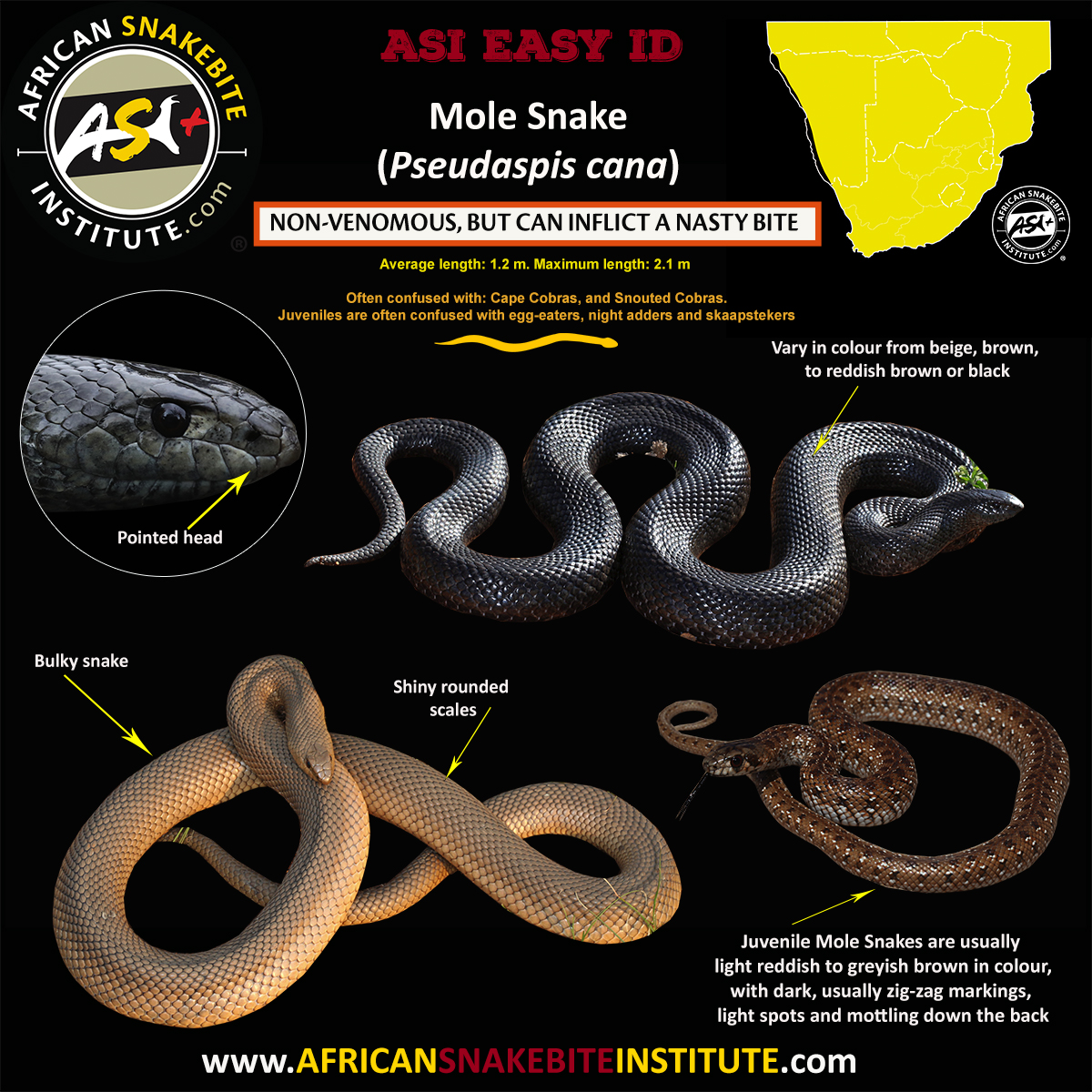This snake is non-venomous. The mole snake can grow to a total length of 2 m (6 ft 7 in). A small head and pointed snout are characteristics of the species. It has a firm, tubular body.
The primary food source is golden moles (hence the common name), rodents, and other small mammals. For this reason, it is considered useful for the natural control of problem rodents.
The range of the mole snake encompasses most of southern Africa. They are also common in Kalahari Gemsbok National Park. The mole snake lives in the abandoned burrows of other animals.
Sources:
(*) https://en.wikipedia.org/wiki/Mole_snake
(*) https://www.africansnakebiteinstitute.com/snake/mole-snake/
(*) https://www.aquarium.co.za/blog/entry/harry-the-mole-snake
By Ctac - Own work, CC BY-SA 3.0, https://commons.wikimedia.org/w/index.php?curid=20484602
Slang
In mature individuals, the body is mostly one colour, and may vary from yellow to brown to grey, and in some cases, solid black. The young have dark markings and spots that are gradually lost as the individual ages.
The primary food source is golden moles (hence the common name), rodents, and other small mammals. For this reason, it is considered useful for the natural control of problem rodents.
The range of the mole snake encompasses most of southern Africa. They are also common in Kalahari Gemsbok National Park. The mole snake lives in the abandoned burrows of other animals.
Sources:
(*) https://en.wikipedia.org/wiki/Mole_snake
(*) https://www.africansnakebiteinstitute.com/snake/mole-snake/
(*) https://www.aquarium.co.za/blog/entry/harry-the-mole-snake

